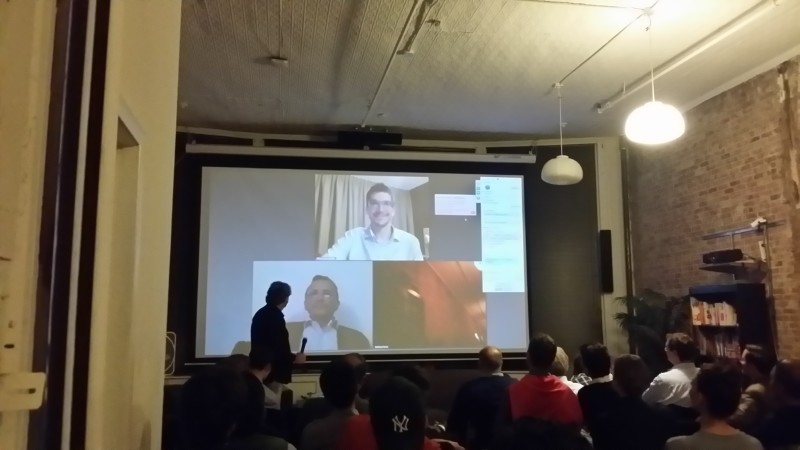‘Think jobs, pains and gains, not build, measure and learn’–Osterwalder
By Dennis Clenente
In the startup world, who doesn’t know Alex Osterwalder, the lead author of the global best-seller, Business Model Generation, the handbook for visionaries, game changers and challengers? Osterwalder invented the “Business Model Canvas,” the strategic management tool for designing, testing, building and managing business models.
Last October 22, Startup Grind in New York City hosted a brief live Skype interview with Osterwalder from Switzerland and his co-author Yves Pigneur about their latest book, Value Proposition Design. Host Bob Dorf, co-author of The Startup Owner’s Manual, gave a short introduction of Osterwalder’s Business Model Canvas before introducing him and Pigneur, saying how it was initially developed for big companies but was discovered and used more by startups through the years.
Taking a cue from that, Osterwalder, speaking from Switzerland, began his talk talking about how the once-mighthy Kodak fell by the wayside. “It failed to create a value proposition for the digital camera.” Now even big companies use the canvas.
In the new book, Osterwalder expands on his canvas concept to include Value Proposition Design (VPD), a guide for creating products and services that customers want
Determining customer needs certainly takes precedence here. For him, it’s about relentlessly taking a customer perspective, listening to customers than selling to them.
It’s not surprising to hear this from him, since he has utmost respect for Steve Blank’s work on customer development. For him, building first is a waste when the way to go about conjuring up your idea is to think about what he calls “jobs, pains and gains,” NOT build, measure and learn.”
“There’s a danger with build measure and learn. You do this you start in the worst possible way to test your ideas,” he said.
To avoid this, he suggests using the Value Map to determine the jobs, pains and gains. They come in a square and circle.
So we have come from the rectangle in the Business Model Canvas to the square (value proposition) and circle (customer development). In this manner, he says in the book, you (see and) achieve fit when your value map meets your customer profile.
“(But) you will want to test the circle first before the square,” he advised.
There is more to explore in this colorful book, including how it states these statements plainly yet clearly, “The Business Model Canvas helps you create value for your business. The Value Proposition Canvas helps you create value for your customer.”
[slideshare id=39659749&doc=jwsosterwalder10characteristicsinfographicfinalhires-140929110346-phpapp01&type=d]
Osterwalder says he didn’t want to reinvent the wheel with the book. VPD goes “hand in hand with the Business Model Canvas.”
The important thing is to turn your ideas into value proposition prototypes with the many available practical tools offered in the book.
Why add more tools?
Who wouldn’t believe Osterwalder when he says, “I believe (why) a surgeon (needs) many tools than just a Swiss knife.” No pun intended even if he’s Swiss.
Still, wondering if the new book is for you, here are some questions to ask yourself:
Are you overwhelmed by the task of true creation?
Frustrated by unproductive meetings and misaligned teams?
Involved in bold shiny projects that blew up?
Disappointed by the failure of a good idea?
If so, Osterwalder believes Value Proposition Design will help you in the following ways:
Understand the patterns of value creation
Leverage the experience and skills of your team
Avoid wasting time with ideas that don’t work
Design, test, and deliver what customers want
